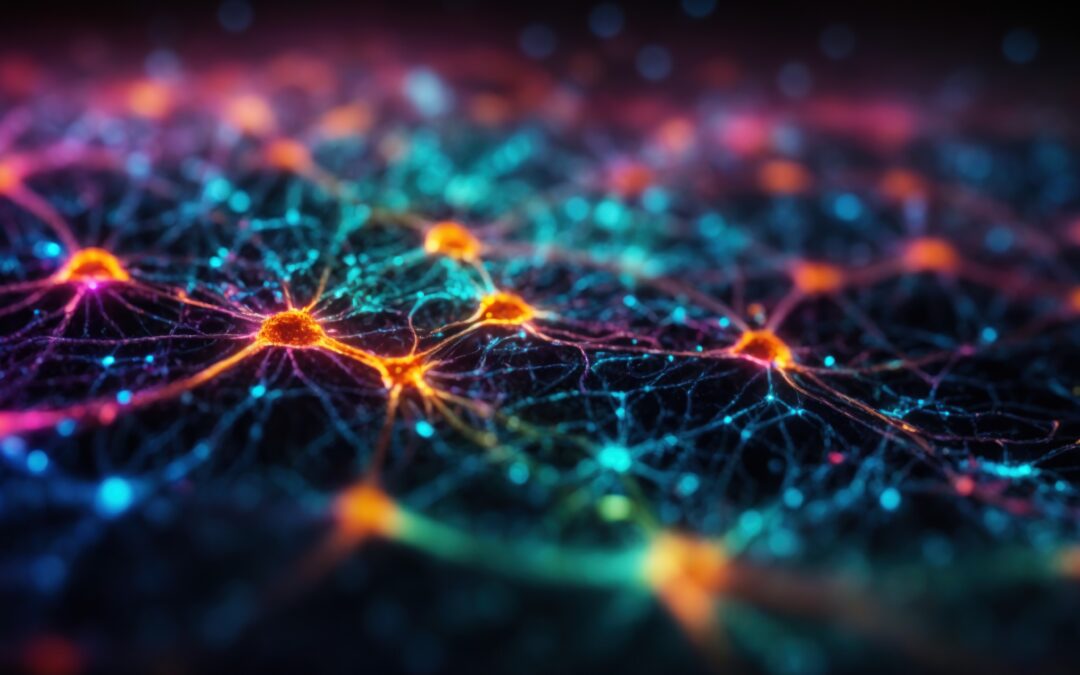Neuroplasticity and neural regeneration are fundamental processes that underpin the brain’s remarkable ability to adapt, recover, and potentially enhance its functions throughout life. This essay explores the mechanisms of neuroplasticity, its occurrence in various contexts, its role in recovery from disorders and brain trauma, and the potential of working memory training to enhance neuroplastic changes. By examining current scientific research, we can gain insights into how these processes contribute to brain adaptation and recovery.
Neuroplasticity refers to the brain’s capacity to reorganise and modify its neural networks in response to various stimuli, experiences, and challenges (Valenzuela, 2016). This adaptive capability allows for the formation of new neural connections and the reshaping of existing ones. Neural regeneration, on the other hand, involves the regrowth or repair of damaged neural tissues, including neurons and their axons (Zhang et al., 2022).
Mechanisms of Neuroplasticity
Neuroplasticity encompasses several key mechanisms that contribute to the brain’s adaptability:
Synaptic Plasticity
Synaptic plasticity involves changes in the strength and effectiveness of connections between neurons. This process is fundamental to learning and memory formation. Long-term potentiation (LTP) and long-term depression (LTD) are two well-studied forms of synaptic plasticity that contribute to the strengthening or weakening of synaptic connections, respectively (El-Boustani et al., 2018).
Structural Plasticity
Structural plasticity refers to physical changes in the brain’s architecture, including:
- Dendritic remodelling: Changes in the branching patterns of dendrites, which are the receiving ends of neurons.
- Axonal sprouting: The growth of new axonal branches to form new connections.
- Synaptogenesis: The formation of new synapses between neurons.
- Neurogenesis: The generation of new neurons, primarily in specific regions such as the hippocampus and subventricular zone (Spalding et al., 2013).
Functional Reorganisation
Functional reorganisation involves the reassignment of tasks to different brain areas, often in response to injury or sensory deprivation. This process allows the brain to compensate for damaged regions by recruiting other areas to take on lost functions (Ward et al., 2003).
When Neuroplasticity Occurs
Neuroplasticity is an ongoing process that occurs throughout the lifespan, but it is particularly pronounced during certain periods and in response to specific stimuli:
Critical Periods in Development
During early childhood, the brain undergoes rapid growth and organisation, with neuroplasticity playing a crucial role in shaping neural circuits based on environmental inputs and experiences (Buschkuehl et al., 2008).
Learning and Memory Formation
Whenever we acquire new knowledge or skills, neuroplasticity enables the formation and strengthening of neural connections associated with that learning (El-Boustani et al., 2018).
Response to Injury or Trauma
Following brain injury or neurological disorders, neuroplasticity mechanisms are activated as the brain attempts to compensate for damage and restore function (Constantinidis & Klingberg, 2016).
Ongoing Adaptation
Even in adulthood, the brain continues to exhibit neuroplasticity in response to new experiences, environmental changes, and cognitive demands (Valenzuela, 2016).
Neuroplasticity in Disorders and Brain Trauma
Neuroplasticity plays a crucial role in recovery and adaptation following various neurological conditions and brain injuries:
Stroke
After a stroke, the brain can reorganise itself to compensate for damaged areas. Undamaged regions may take on functions previously performed by the affected areas, leading to recovery of lost abilities (Flint Rehab, n.d.). For instance, if a stroke affects the left hemisphere’s language centre, the right hemisphere may adapt to support language functions.
Research by Ward et al. (2003) used functional MRI to demonstrate that recovery from stroke is associated with a reorganisation of brain networks. They found that patients with better recovery showed more normalised patterns of brain activation during hand movements.
Traumatic Brain Injury (TBI)
Following TBI, neuroplasticity enables the brain to form new neural connections and pathways, potentially restoring some lost functions. This process involves both structural and functional changes in the brain (NCBI, 2015).
A study by Grefkes et al. (2008) used dynamic causal modelling of fMRI data to show that stroke disrupts the balance of excitatory and inhibitory influences between hemispheres. They found that motor recovery was associated with a restitution of inter-hemispheric connectivity.
Alzheimer’s Disease and Cognitive Decline
While Alzheimer’s disease causes progressive neurodegeneration, neuroplasticity mechanisms can help compensate for some cognitive deficits, especially in the early stages of the disease. Cognitive training and stimulating activities may enhance this compensatory plasticity (Buschkuehl et al., 2008).
Grady et al. (2003) used fMRI to show that Alzheimer’s patients recruit additional prefrontal and posterior cortical regions during memory tasks compared to healthy controls, suggesting a compensatory neuroplastic response.
Spinal Cord Injury (SCI)
Although complete regeneration of the spinal cord remains challenging, neuroplasticity can contribute to functional improvements after SCI. This may involve reorganisation of neural circuits above and below the injury site (Zhang et al., 2022).
Restoration of Cognitive Functions through Neuroplasticity
Neuroplasticity plays a crucial role in restoring cognitive functions after brain trauma or in the context of neurological disorders. Several mechanisms contribute to this recovery process:
Synaptic Plasticity
The strengthening or weakening of synaptic connections between neurons is a fundamental mechanism of neuroplasticity. This process, known as synaptic plasticity, allows for the formation of new neural circuits and the modification of existing ones, supporting cognitive recovery (El-Boustani et al., 2018).
Functional Reorganisation
Following brain injury, undamaged areas of the brain can take on functions previously performed by damaged regions. This functional reorganisation is a key aspect of neuroplasticity-driven recovery (Physio-pedia, n.d.).
Neurogenesis
While limited in the adult brain, the generation of new neurons (neurogenesis) can contribute to cognitive recovery, particularly in regions such as the hippocampus, which is crucial for memory formation (Valenzuela, 2016).
Axonal Sprouting
After injury, surviving neurons can sprout new axonal branches to form new connections, potentially compensating for lost neural pathways (Zhang et al., 2022).
Dendritic Remodelling
Changes in the structure and complexity of dendritic branches can enhance neural connectivity and support cognitive recovery (NCBI, 2015).
Working Memory Training and Neuroplasticity Enhancement
Working memory training has gained attention as a potential method to enhance neuroplasticity and improve cognitive function. Several studies have investigated the effects of such training on brain plasticity and cognitive performance:
Neural Changes Associated with Training
A study by Buschkuehl et al. (2008) found that working memory training led to increased blood perfusion in frontal and parietal regions implicated in working memory tasks. This suggests that training can induce functional changes in relevant brain areas.
Structural Brain Changes
Research has shown that intensive working memory training can lead to structural changes in the brain. A study by Takeuchi et al. (2010) reported increases in white matter integrity following working memory training, indicating enhanced neural connectivity.
Transfer Effects
Some studies have reported transfer effects of working memory training to other cognitive domains. For instance, Jaeggi et al. (2008) found that training on a dual N-back task led to improvements in fluid intelligence measures.
Neuroplasticity in Older Adults
Working memory training has shown promise in enhancing cognitive function even in older adults. Buschkuehl et al. (2008) demonstrated that 80-year-old adults who underwent working memory training showed improved memory performance on multiple measures compared to an active control group.
Activation Changes
Neuroimaging studies have revealed changes in brain activation patterns following working memory training. For example, Olesen et al. (2004) observed increased activity in prefrontal and parietal cortices after training, suggesting more efficient neural processing.
A recent study by Duda and Sweet (2019) conducted a meta-analysis of functional brain changes following working memory training. They found evidence of induced changes in the frontoparietal network, which is known to be essential for working memory processes.
White Matter Integrity
A longitudinal diffusion tensor imaging study by Román et al. (2016) investigated the effects of a four-week adaptive working memory training on white matter integrity in young and older adults. The results showed a decrease in mean diffusivity in the right superior longitudinal fasciculus for both age groups after the intervention, indicating improved white matter integrity. For older adults, there was also a decrease in mean diffusivity in the right inferior longitudinal fasciculus. These findings suggest that working memory training can lead to structural changes in white matter tracts associated with working memory function, particularly in older adults.
However, it is important to note that the effectiveness of working memory training in enhancing neuroplasticity and cognitive function remains a topic of debate in the scientific community. While some studies have shown promising results, others have found limited or no transfer effects to untrained tasks (Melby-Lervåg & Hulme, 2013).
Scientific Research Results
Several scientific studies have provided insights into the mechanisms and effects of neuroplasticity and neural regeneration:
Neuroplasticity in Stroke Recovery
A study by Cramer et al. (2011) used functional MRI to investigate brain reorganisation after stroke. They found that recovery of motor function was associated with increased activation in undamaged motor areas and the recruitment of additional brain regions.
Cognitive Training and Brain Plasticity
Lövdén et al. (2010) conducted a meta-analysis of studies on cognitive training and brain plasticity. They concluded that cognitive training can lead to structural and functional changes in the brain, particularly in regions associated with the trained tasks.
Neurogenesis in the Adult Brain
Research by Spalding et al. (2013) provided evidence for ongoing neurogenesis in the adult human hippocampus, challenging the long-held belief that neurogenesis ceases in adulthood.
Axon Regeneration in the Central Nervous System
A study by Liu et al. (2011) demonstrated that manipulating specific molecular pathways could enhance axon regeneration in the adult mammalian central nervous system, offering potential therapeutic targets for promoting neural repair.
Working Memory Training and Neural Efficiency
Constantinidis and Klingberg (2016) reviewed neuroimaging studies of working memory training and found evidence for increased neural efficiency and capacity following training, reflected in changes in brain activation patterns.
In conclusion, neuroplasticity and neural regeneration represent powerful mechanisms through which the brain can adapt, recover, and potentially enhance its function. These processes play crucial roles in development, learning, and recovery from injury or disease. Working memory training has shown promise in enhancing neuroplasticity, particularly in older adults, although more research is needed to fully understand its effects and potential applications. As our understanding of these mechanisms grows, it may lead to more effective interventions for cognitive enhancement and rehabilitation following brain injury or neurological disorders.
References
Buschkuehl, M., Jaeggi, S. M., Hutchison, S., Perrig-Chiello, P., Däpp, C., Müller, M., … & Perrig, W. J. (2008). Impact of working memory training on memory performance in old-old adults. Psychology and Aging, 23(4), 743-753.
Constantinidis, C., & Klingberg, T. (2016). The neuroscience of working memory capacity and training. Nature Reviews Neuroscience, 17(7), 438-449.
Cramer, S. C., Sur, M., Dobkin, B. H., O’Brien, C., Sanger, T. D., Trojanowski, J. Q., … & Vinogradov, S. (2011). Harnessing neuroplasticity for clinical applications. Brain, 134(6), 1591-1609.
Duda, B. M., & Sweet, L. H. (2019). Functional brain changes associated with cognitive training in healthy older adults: A preliminary ALE meta-analysis. Brain Imaging and Behavior, 14(4), 1247-1262.
El-Boustani, S., Ip, J. P. K., Breton-Provencher, V., Knott, G. W., Okuno, H., Bito, H., & Sur, M. (2018). Locally coordinated synaptic plasticity of visual cortex neurons in vivo. Science, 360(6395), 1349-1354.
Flint Rehab. (n.d.). Neuroplasticity After Stroke: How the Brain Overcomes Injury. Retrieved from https://www.flintrehab.com/neuroplasticity-after-stroke/
Grady, C. L., McIntosh, A. R., Beig, S., Keightley, M. L., Burian, H., & Black, S. E. (2003). Evidence from functional neuroimaging of a compensatory prefrontal network in Alzheimer’s disease. Journal of Neuroscience, 23(3), 986-993.
Grefkes, C., Nowak, D. A., Eickhoff, S. B., Dafotakis, M., Küst, J., Karbe, H., & Fink, G. R. (2008). Cortical connectivity after subcortical stroke assessed with functional magnetic resonance imaging. Annals of Neurology, 63(2), 236-246.
Jaeggi, S. M., Buschkuehl, M., Jonides, J., & Perrig, W. J. (2008). Improving fluid intelligence with training on working memory. Proceedings of the National Academy of Sciences, 105(19), 6829-6833.
Liu, K., Lu, Y., Lee, J. K., Samara, R., Willenberg, R., Sears-Kraxberger, I., … & He, Z. (2011). PTEN deletion enhances the regenerative ability of adult corticospinal neurons. Nature Neuroscience, 14(9), 1097-1104.
Lövdén, M., Bäckman, L., Lindenberger, U., Schaefer, S., & Schmiedek, F. (2010). A theoretical framework for the study of adult cognitive plasticity. Psychological Bulletin, 136(4), 659-676.
Melby-Lervåg, M., & Hulme, C. (2013). Is working memory training effective? A meta-analytic review. Developmental Psychology, 49(2), 270-291.
NCBI. (2015). Neuroplasticity after Traumatic Brain Injury. Retrieved from https://www.ncbi.nlm.nih.gov/books/NBK326735/
Olesen, P. J., Westerberg, H., & Klingberg, T. (2004). Increased prefrontal and parietal activity after training of working memory. Nature Neuroscience, 7(1), 75-79.
Physio-pedia. (n.d.). Role of Neuroplasticity in Neuro-rehabilitation. Retrieved from https://www.physio-pedia.com/Role_of_Neuroplasticity_in_Neuro-rehabilitation
Román, F. J., Iturria-Medina, Y., Martínez, K., Karama, S., Burgaleta, M., Evans, A. C., … & Colom, R. (2016). Enhanced structural connectivity within a brain sub-network supporting working memory and engagement processes after cognitive training. Neurobiology of Learning and Memory, 141, 33-43.
Spalding, K. L., Bergmann, O., Alkass, K., Bernard, S., Salehpour, M., Huttner, H. B., … & Frisén, J. (2013). Dynamics of hippocampal neurogenesis in adult humans. Cell, 153(6), 1219-1227.
Takeuchi, H., Sekiguchi, A., Taki, Y., Yokoyama, S., Yomogida, Y., Komuro, N., … & Kawashima, R. (2010). Training of working memory impacts structural connectivity. Journal of Neuroscience, 30(9), 3297-3303.
Valenzuela, M. (2016). Neuroplasticity: the science behind rewiring the brain. University of Sydney. Retrieved from https://www.sydney.edu.au/news-opinion/news/2016/06/01/neuropl

I am an experimental psychologist and cognitive neuroscientist, working as a PhD researcher in the Centre for Cognition, Computation and Modelling at Birkbeck, University of London. My work investigates the architecture of working memory, how our highest cognitive functions develop and change across the lifespan, and the design of interventions to support cognitive health, particularly in ageing.
My professional foundation in psychology and cognitive neuroscience is built upon over fifteen years of continuous, hands-on research and applied practice. This extensive trajectory is formally validated by a portfolio of over 245 accredited Continuing Professional Development and Continuing Medical Education certificates, reflecting a sustained and profound dedication to expertise.
My work is defined by established, evidence-based concentrations in complex, high-impact areas:
-
Clinical & Neurocognitive Health: My advanced expertise encompasses the neuroscience and clinical management of degenerative diseases such as Alzheimer's, Parkinson's, and Multiple Sclerosis, alongside neurodevelopmental conditions including ADHD and Autism. I also maintain a command of trauma-informed care, epilepsy, sleep disorders, schizophrenia, and substance use disorders.
-
Women's Mental Health & Lifespan Care: A core area of my practice focuses on women's mental health, with in-depth knowledge of disorders where biological and psychological health intersect. This includes specialised proficiency in perinatal and postpartum mental health, perimenopausal and menopausal mood disorders, the psychological impact of polycystic ovary syndrome (PCOS) and endometriosis, and the mental health dimensions of breast cancer and cardiovascular disease.
-
Intervention, Innovation & Cognitive Healthspan: My concentration is in designing both cognitive rehabilitation strategies and evidence-based programmes for healthy cognitive ageing. This involves the applied use and governance of AI in healthcare, machine learning for health equity, gamification in treatment, and deploying integrated telehealth platforms to support cognitive vitality across the lifespan.
-
Inclusive Practice & Scientific Leadership: My work is grounded in expert knowledge of mental health leadership, team-based care models, and the psychology of influence. It is further informed by advanced, practical training in diversity, equity, and inclusion—with a particular focus on LGBTQ+ health, mitigating unconscious bias, and providing culturally integrated care—all governed by a rigorous framework of research ethics and science communication.
Outside of academic research, I design and build proprietary digital tools for cognitive intervention. This work is the foundation of NeuxScience, a Software-as-a-Service (SaaS) platform that I architected and developed. The system leverages my own machine learning models and data science pipelines to deliver personalised, adaptive cognitive training by integrating my research on higher order cognitive functions directly into the platform's core logic.
I am committed to making the science of the mind clear and useful. Through my writing, I aim to educate, share evidence, and show how research in cognition and brain health can be applied in everyday, meaningful ways.
In my life beyond work, I am a mother and wife, managing a very full home with three boys, four dogs, and five cats.



